Operational Appearance: April 1945
“Green 9”, as deduced from the green color of its identification number, became operational within Stab/JG 301 presumably from April 1945 onwards. The assignment of the aircraft to this unit resulted in a few changes of its appearance that, however, were in accordance to the current standards.
The identification number was applied in RLM 25 Hellgrün outlined in black on both sides of the fuselage, right above the wing trailing edge. Unit recognition bands were added on the fuselage section immeditely aft of the fin. For JG 301, the band was composed of two red and yellow 450 mm wide stripes. The exact location of these stripes it is not specified by any known directive. However, looking at the photographs of this and of other Focke-Wulf fighters (Fw 190 D-series), there is a certain propensity to align the rear edge of the stripes (closer to the tail) with the fuselage insert that had been added to these aircraft for rebalance its trim after the introduction of the new Jumo 213 engine.
Identification number
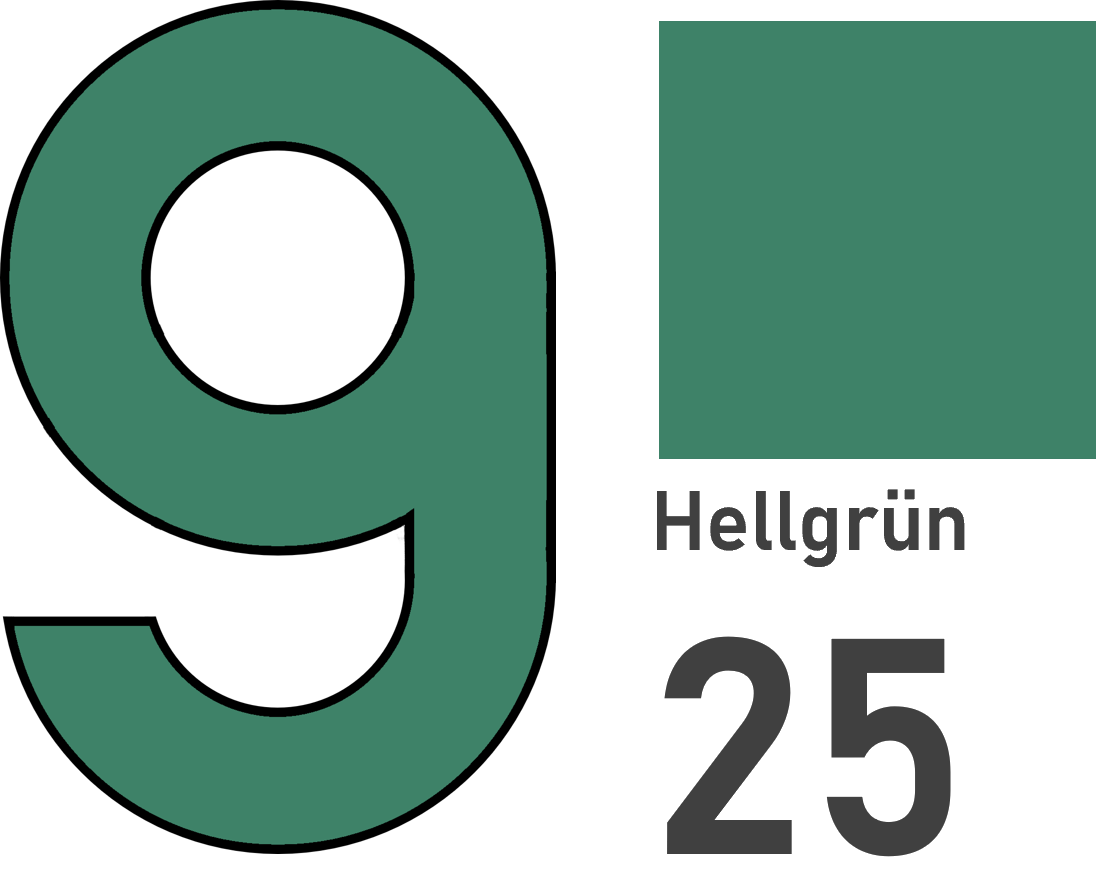
As already mentioned, the identificative number of Ta 152 W.Nr.150168 was a “9” painted in RLM 25 Hellgrün outlined in black. That is also the case of “Green 4” (W.Nr.150010). It was positioned above the trailing edge of the wing root. This can only be deduced by observing the over-painted portion of the fuselage which stands out in the photos of this aircraft taken at Farnborough. Unfortunately, the exact shape of the number “9” is not known with certainty as it is seen over-painted in all photos and only portions showing through the paint. What is possible is that its shape can be estimated by comparison of the same number as observed on other aircraft.
Geschwader Recognition Bands
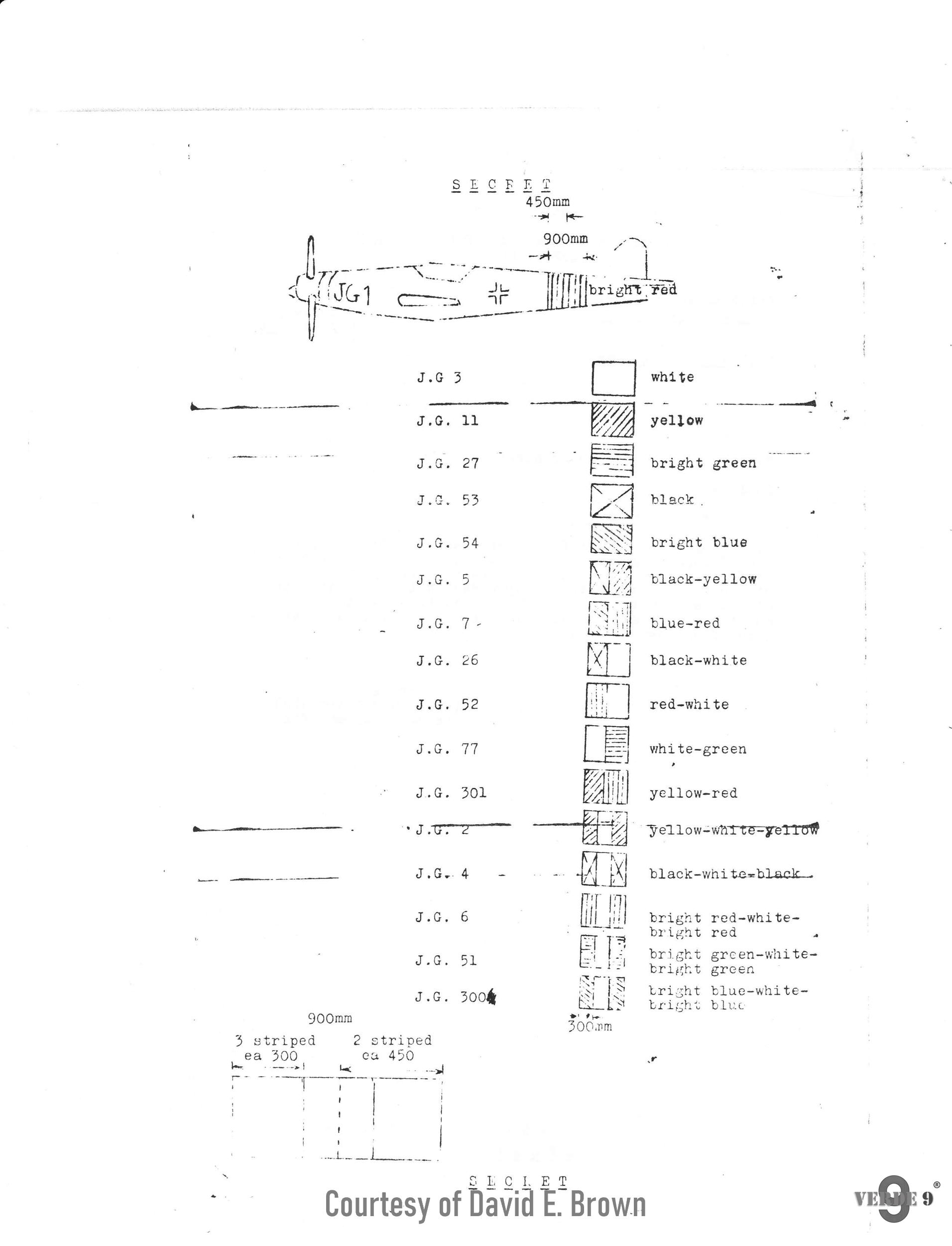
English translation of the German order of 20 February 1945 identifying the Geschwader recognition bands for all day fighter units.
Like all Luftwaffe day fighter units, JG 301, starting from October 1944, introduced the usage of unit recognition bands.In the case of this unit, it consisted of two vertical 450 mm wide bands positioned on the rear fuselage ahead of the fin in yellow and red (front to back). In the case of the Fw 190 D and the Ta 152 H, the rear strip, in most cases, coincided with the 1 metre wide fuselage insert distinguished them, amongst other features, Focke-Wulf fighters with radial engines.
A particular feature that distinguished JG 301’s Gruppe markings was the application of a long thin horizontal band applied on the yellow/red tailband. The color of this strip indicated the respective Gruppe and provided a system of rapid identification during flight:
Bands match
- Green = Geschwaderstab
- White = I. Gruppe
- Red = II. Gruppe
- Yellow – III. Gruppe
- Blue – IV. Gruppe
Olivier Menu was the first person to decipher the relationship between the colour of the horizontal bar and Gruppe. Though the original post is no longer available on the old Luftwaffe Experten Message Board (LEMB) due to a server crash in mid-2005, this information is well presented with additional information on number colours of individual Staffeln in Volume 1 of Jerry Crandall two volume series on the Focke-Wulf Fw 190 D.
JG 301 bands
Since “Green 9” was an aircraft belonging to the Stabschwarm of JG 301, it should theoretically have sported a green RLM 25 horizontal bar, similar to that observed on “Green 4”. Looking at the photos taken at Farnborough in October-November 1945, there is no trace of this detail, although the stripes of the RVT are clearly visible under the coarse repainting carried out by the RAF operators. However, a photo taken of it on 14 July 1945 at Schleswig shows the trace of a horizontal bar under British paint and in the correct position.
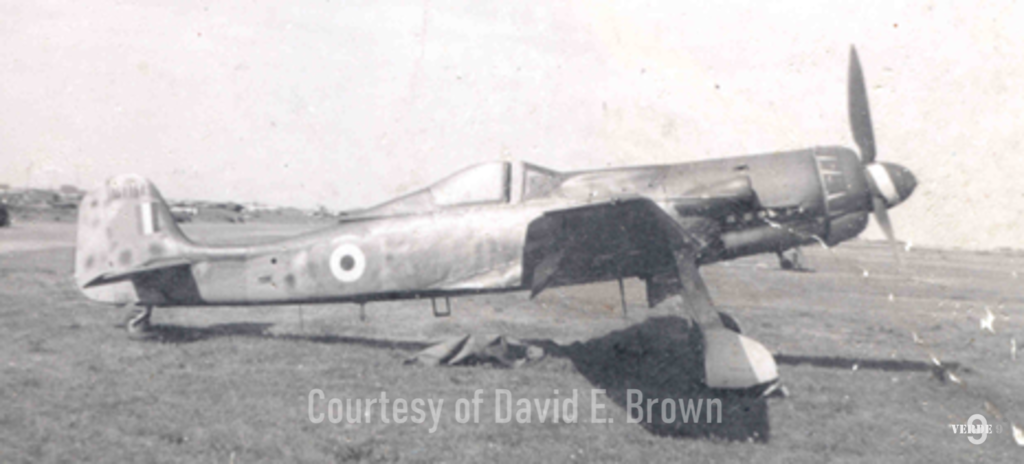
Profile view of “Green 9” taken at Schleswig on 14 July 1945 by P/O Steve Butte of RCAF 403 Squadron (the date is confirmed in his flight book).
Conclusions: The Camouflage of the Ta 152 H-1 “Green 9” (W.Nr. 150168)
The following diagram summarizes the camouflage and markings information discussed in this article. For further chromatic reference, see this article.
- Al: “Albondur” (aluminium, copper and magnesium alloy).
- Al?: darker metallic alloy.
- ??: unknown dark green.
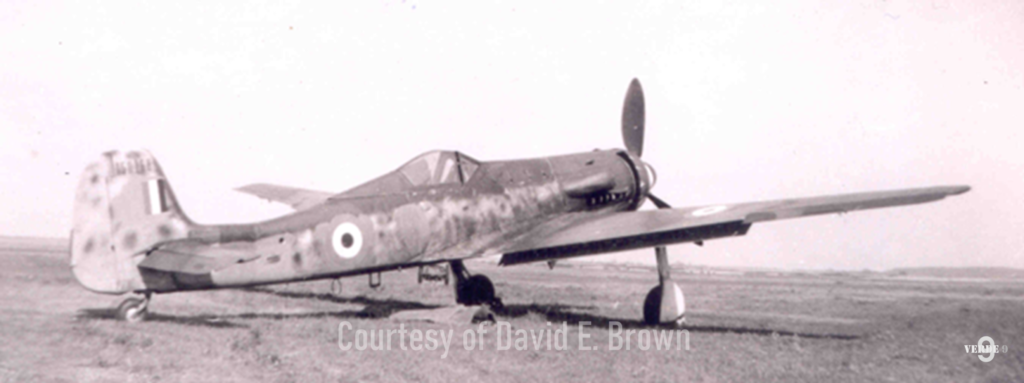
Rear three-quarter view of “Green 9” taken at Schleswig on 14 July 1945 by P/O Steve Butte of RCAF 403 Squadron (the date is confirmed in his flight book).
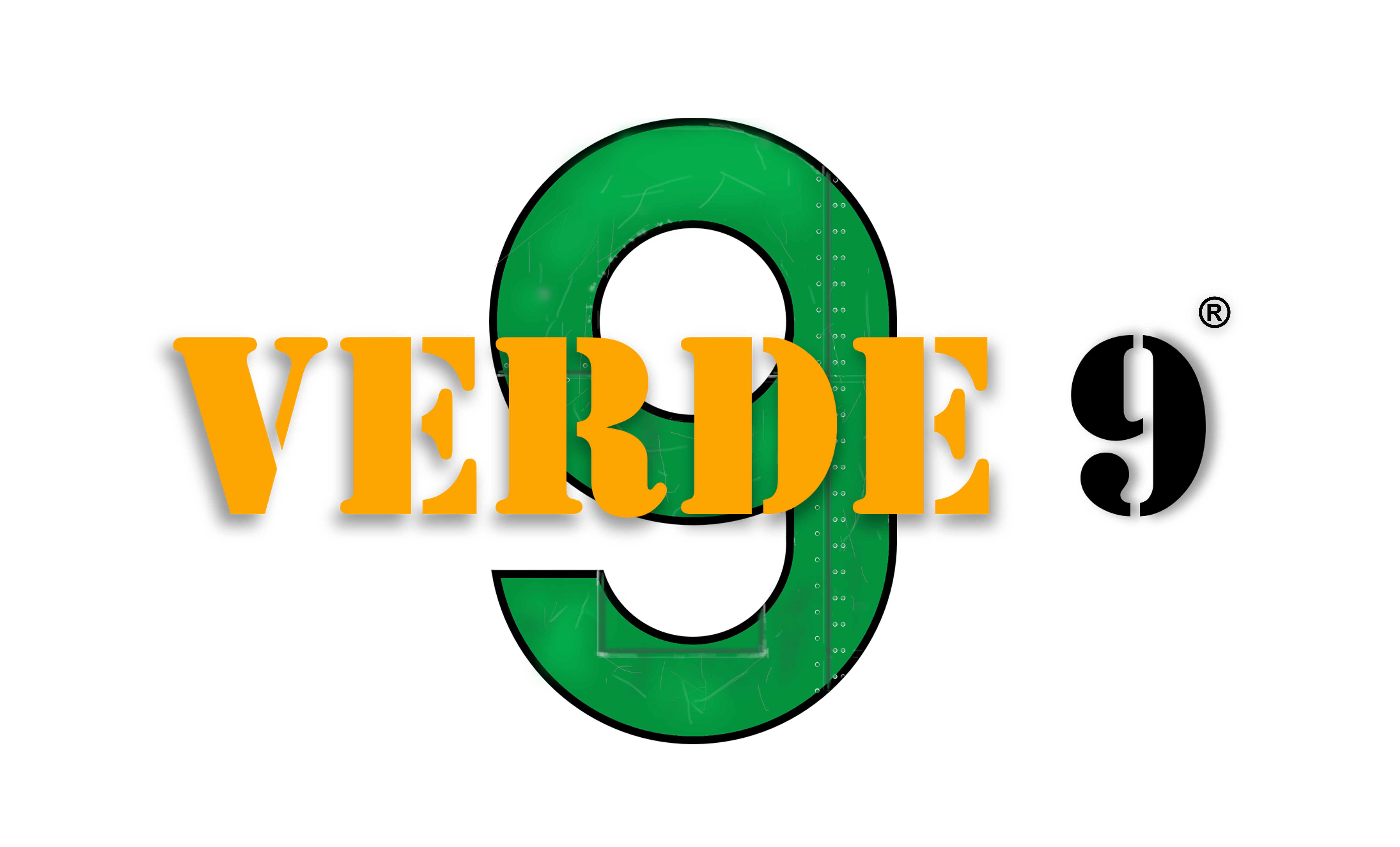

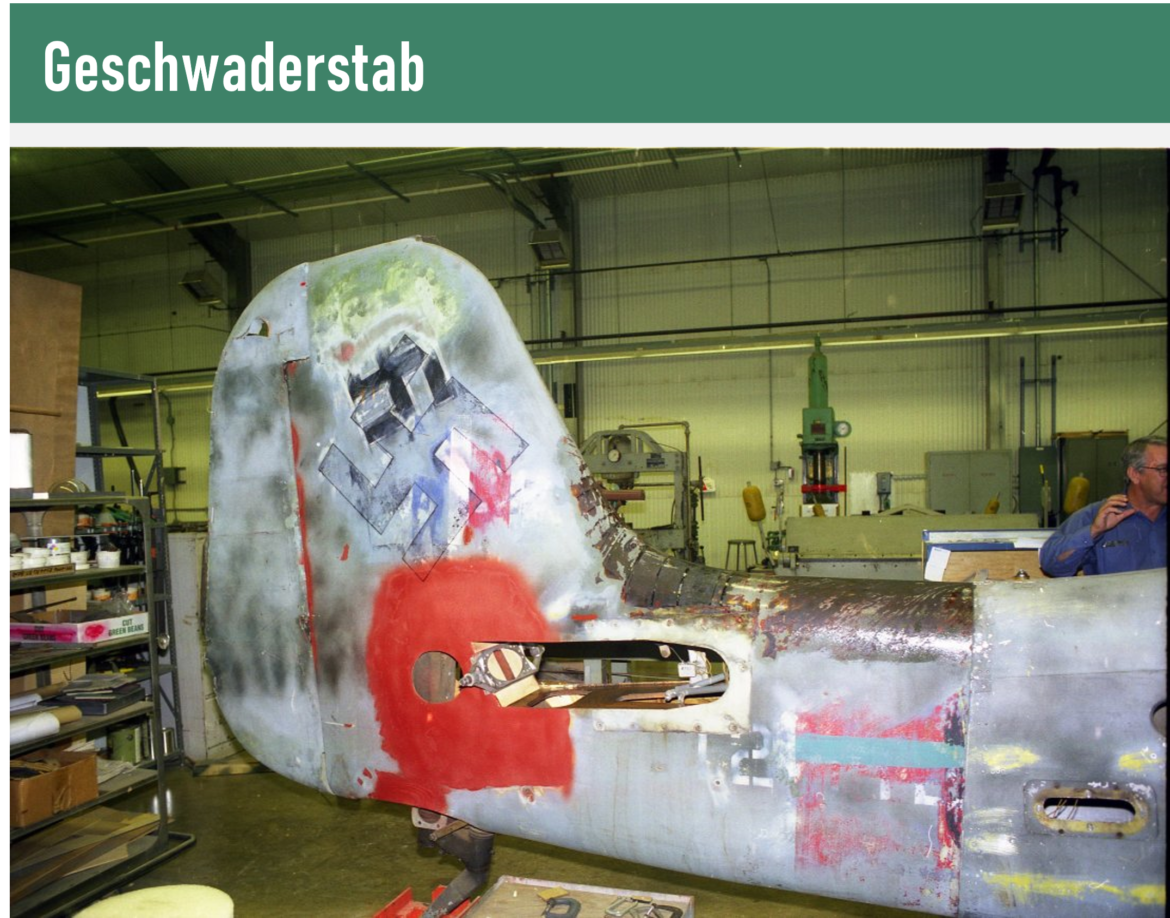
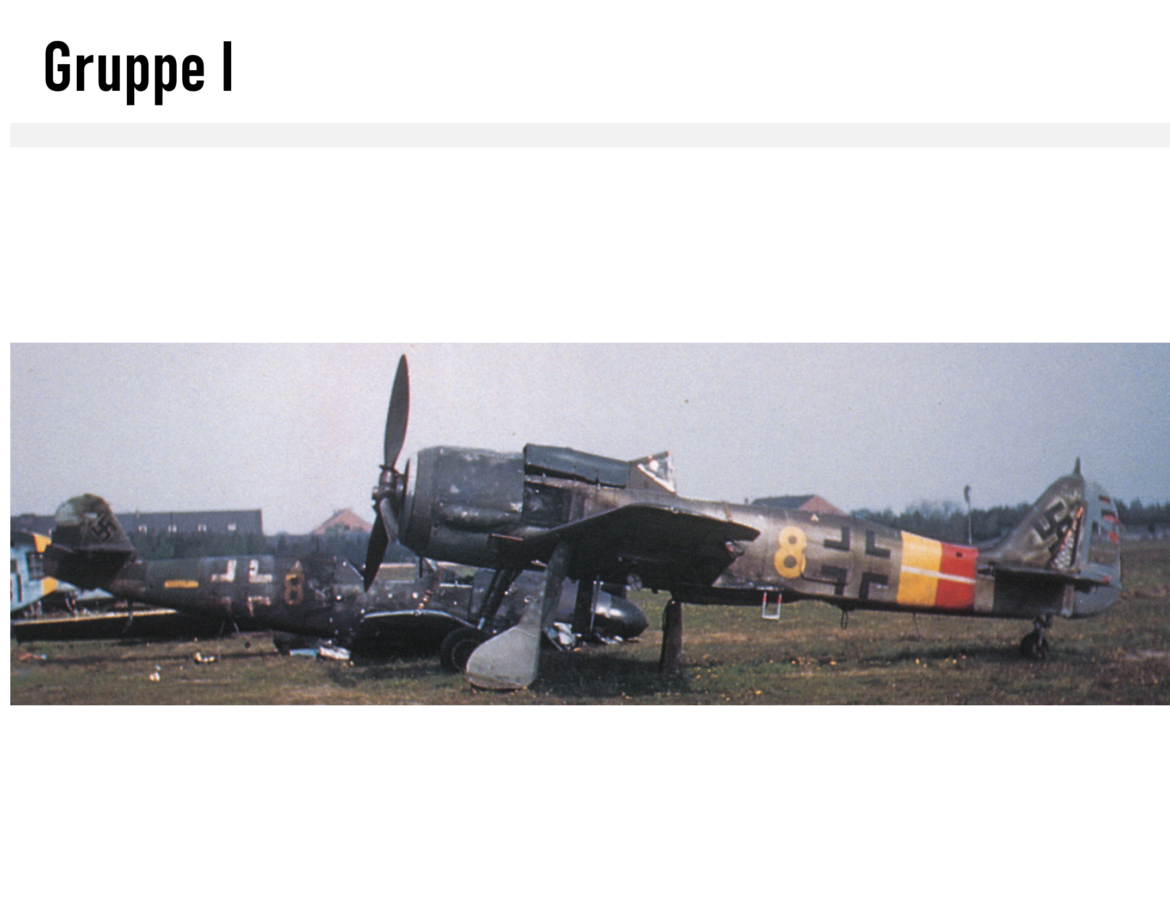
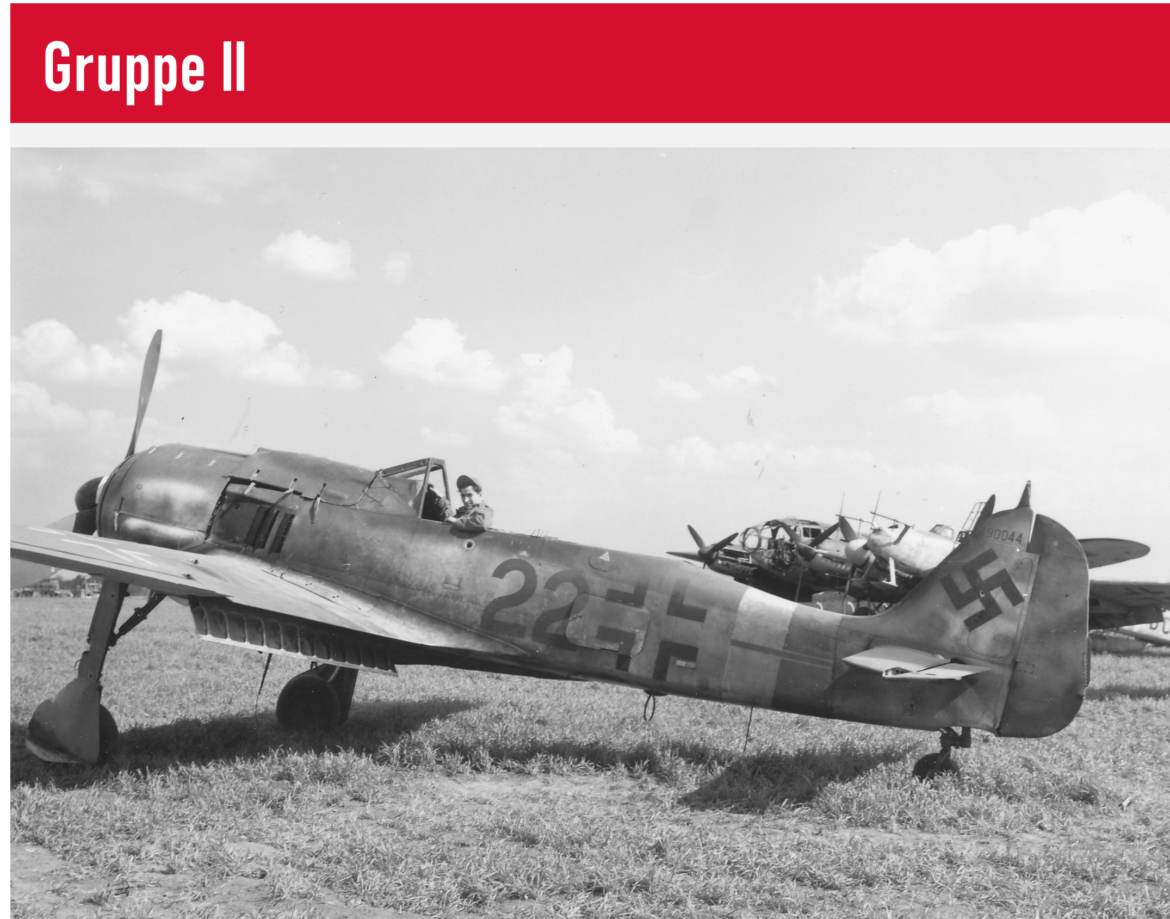
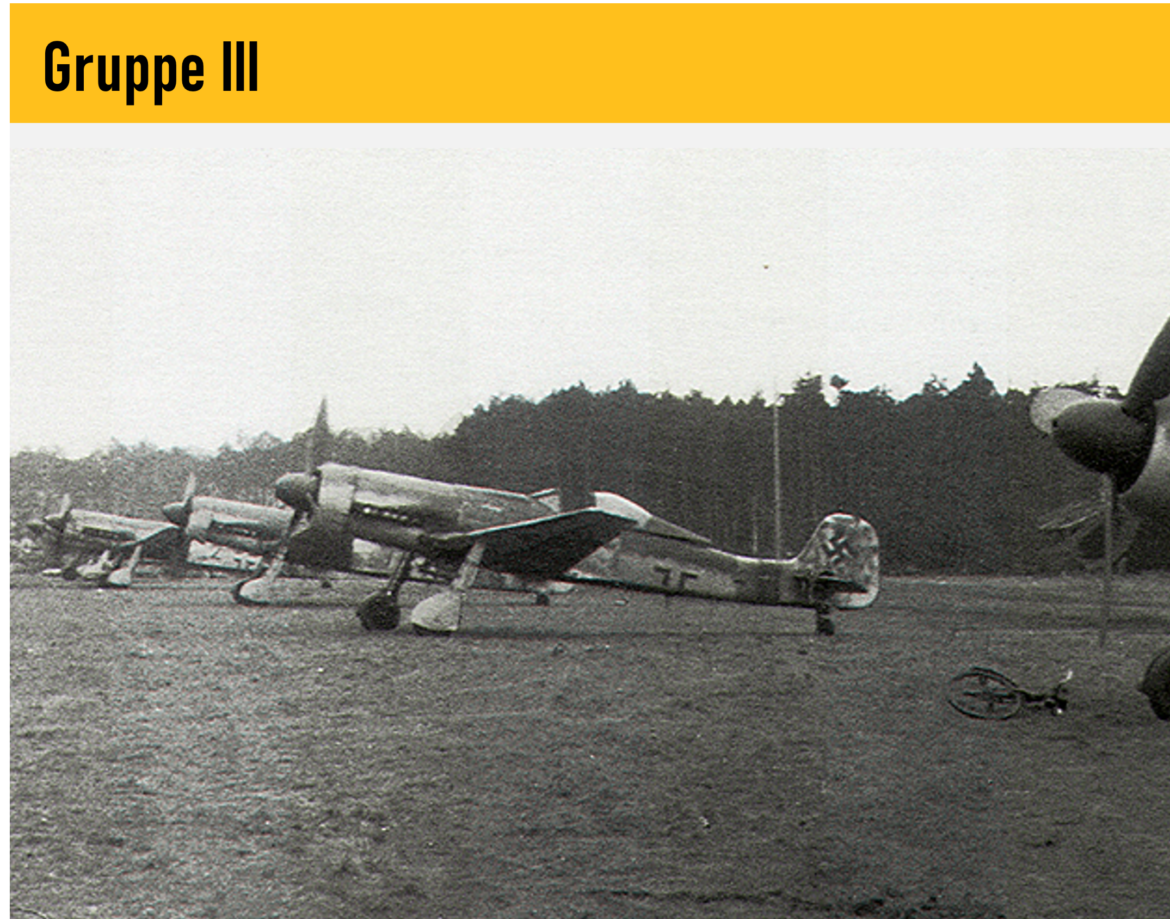
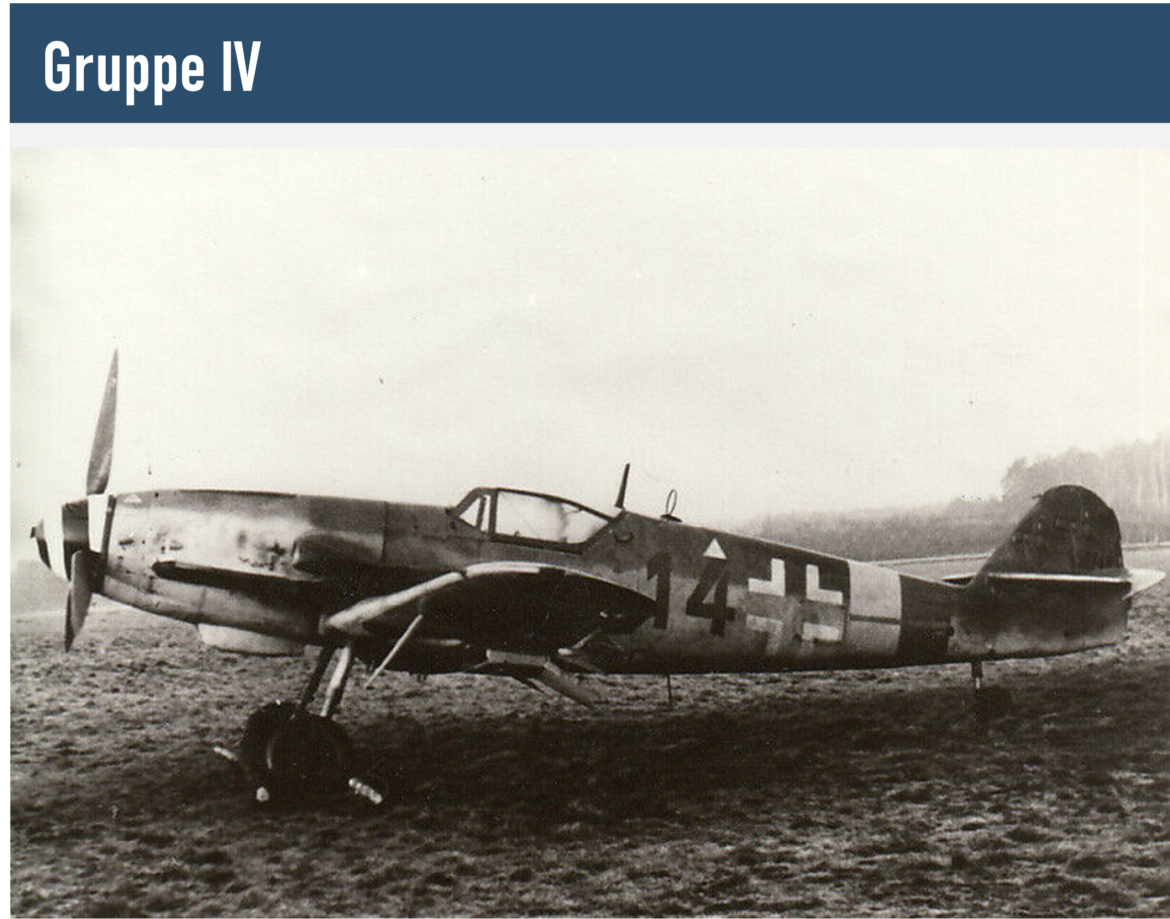
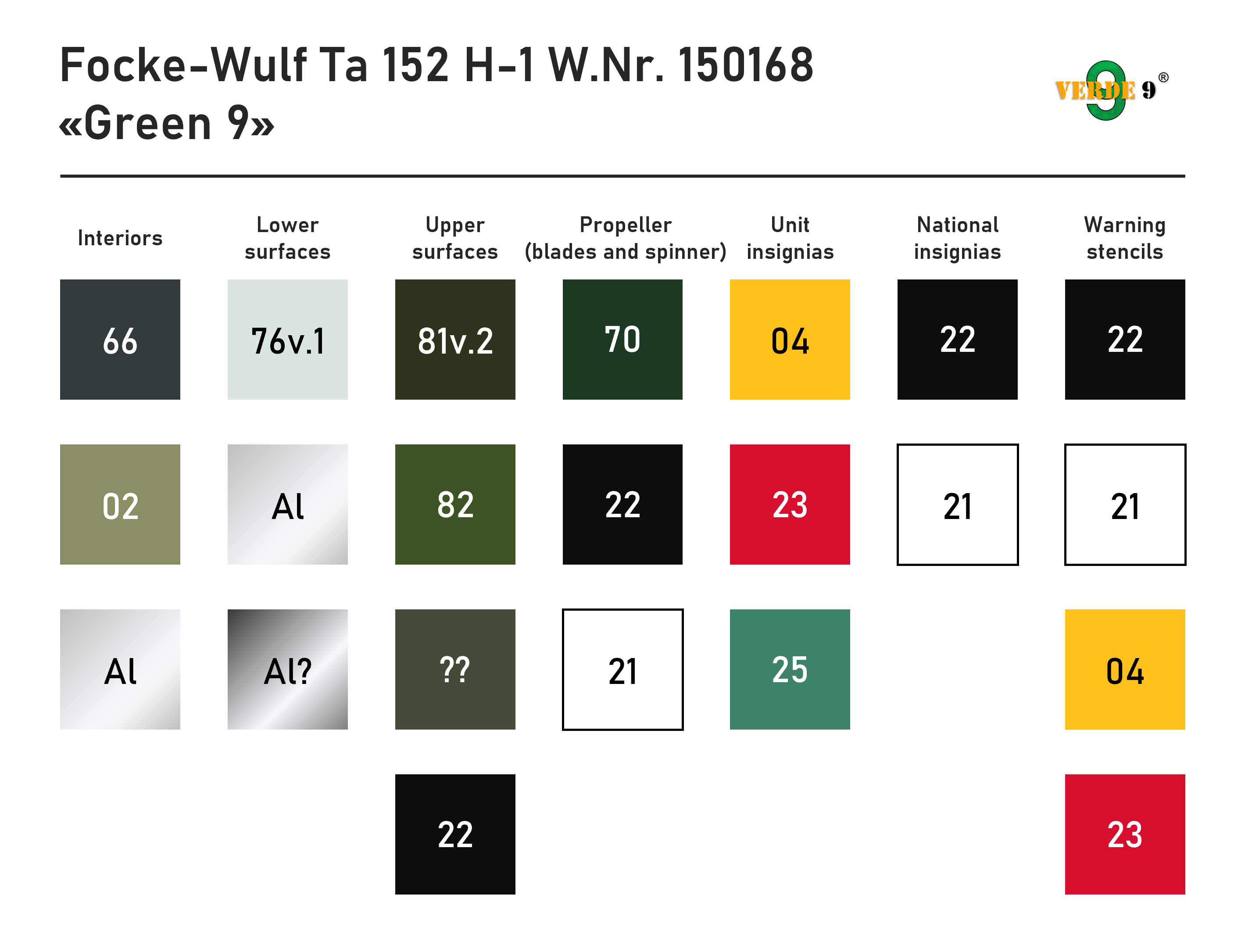
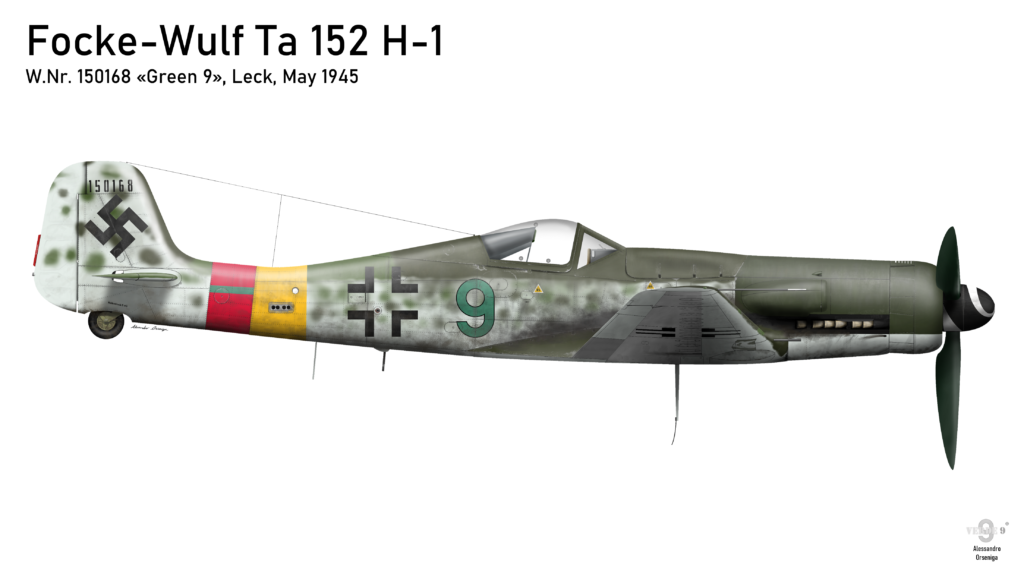
2 commenti
I read this discussion and found it very interesting, but in light of the documentation consulted (which I also have in large part) and in light of the discoveries on the German colors of the Luftwaffe in recent years, don’t you think that the “power egg” is in the dark version of the RLM 82?
Dear Ivano,
Thank you for sharing your opinion! Actually, the “power egg” colour could definitely be a dark shade of RLM 82, as you suggest, and I do agree with you. The reason why I do not want to consider this, as well as any other possibility mentioned in my article as “the actual” colour, is perfectly represented by your kind comment. As long as new information can still be found and new researches developed, I can do nothing but present various theories, both having their strong points and weaknesses, yet plausible. Giving a definitive answer would be like excluding any other suggestion, and that is not the idea that lies behind this article.
If the answer was fixed and assured, the chance of someone expressing a new approach to the topic would be undoubtedly narrowed.
Thanks to people like you, who share their own opinion, furhter points of view and refinements can be achieved and, to me, that is the only way that a reserch in such a specific field like this can be conducted and developed.
I profoundly thank you for expressing your opinion, and I hope that any future reader would be pleased to do the same.
Best regards,
Alessandro